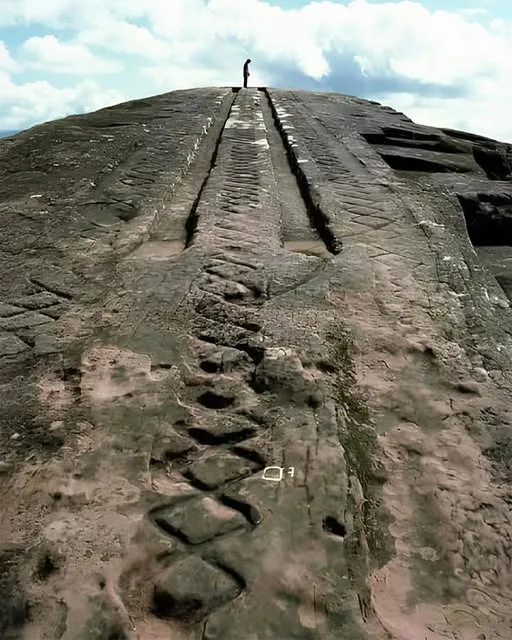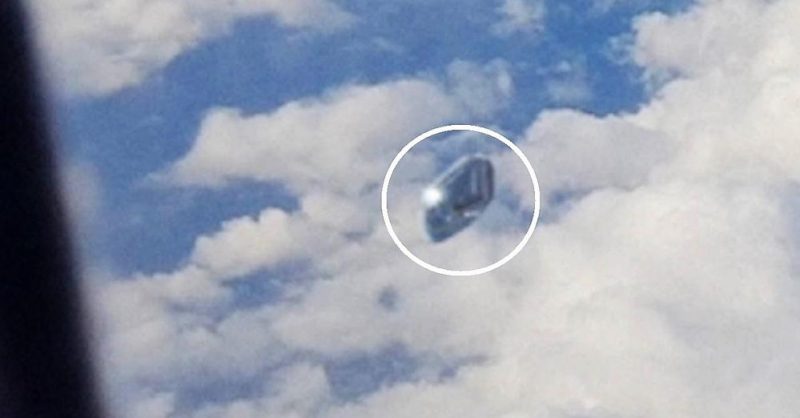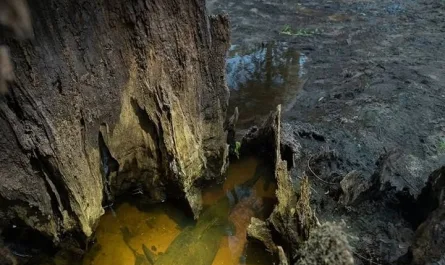El Fuerte de Samaipata: Bolivia’s Megalithic Marvel of Petroglyphs
Nestled in the eastern foothills of the Andes in Bolivia’s Santa Cruz Department, El Fuerte de Samaipata is a striking megalithic site renowned for its intricate petroglyphs carved into a massive sandstone rock formation. Dating back over 2,000 years, this UNESCO World Heritage site, often simply called “Samaipata,” features a vast array of patterns, symbols, and carvings that reflect the extraordinary craftsmanship of its ancient creators. While their exact purpose remains a mystery, the site is widely believed to have served ceremonial and astronomical functions. As of 2025, Samaipata continues to captivate scholars and visitors, standing as one of Bolivia’s most enigmatic and impressive archaeological wonders.

Historical and Cultural Context
El Fuerte de Samaipata, meaning “Fortress at Rest” in Quechua, spans approximately 20 hectares and dates to the pre-Inca period, likely associated with the Chané culture around 300 BCE–300 CE, with later use by the Inca (13th–16th centuries) and Spanish colonizers. The site’s central feature is a colossal sandstone outcrop, measuring 200 meters long and 60 meters wide, intricately carved with geometric patterns, animal motifs, and channels. Its strategic location in the fertile Samaipata Valley, at an altitude of 1,900 meters, made it a hub for trade and cultural exchange between the Andes, Amazon, and Chaco regions.
The site’s history reflects a blend of cultures. The Chané, an Arawak-speaking people, likely created the initial carvings, while the Inca expanded the site, adding structures like terraces and a kallanka (great hall). The Spanish later used it as a defensive outpost, misnaming it “El Fuerte” despite its primarily ceremonial role. This multicultural layering adds to Samaipata’s archaeological significance.
The Carved Rock: A Megalithic Masterpiece
The heart of Samaipata is its massive sandstone rock, known as “La Roca,” adorned with an array of petroglyphs and carvings that cover its surface. Key features include:
- Intricate Petroglyphs: The rock is etched with geometric shapes (zigzags, spirals, and parallel lines), animal figures (jaguars, serpents, and birds), and anthropomorphic motifs. These carvings, some up to 20 centimeters deep, demonstrate remarkable precision given the tools available.
- Ceremonial Structures: Two large niches, dubbed “the Choir of the Priests,” are carved into the rock’s summit, possibly for seating during rituals. Nearby, a series of channels and basins may have been used for offerings or to collect water, suggesting a connection to fertility or purification ceremonies.
- Astronomical Alignments: Some scholars propose the carvings align with celestial events, such as solstices or equinoxes, indicating the rock served as an astronomical observatory. The orientation of certain lines and niches supports this theory, though it remains speculative.
- Channels and Platforms: The rock features long, straight channels, possibly for ritual liquids like chicha (fermented corn drink), and terraced platforms that may have supported altars or ceremonial gatherings.
The scale and complexity of these carvings, executed on a soft yet durable sandstone surface, highlight the technical skill and cultural sophistication of the Chané and their successors.
Purpose and Significance
While the precise function of Samaipata’s carvings is unknown, archaeologists propose several roles based on the site’s features and regional context:
- Ceremonial Hub: The niches, channels, and animal motifs suggest rituals related to fertility, agriculture, or spiritual practices, possibly honoring deities linked to nature, as jaguars and serpents were sacred in Andean and Amazonian cosmologies.
- Astronomical Observatory: The alignment of carvings with celestial events points to a possible role in tracking seasons or celestial cycles, critical for agricultural societies in the Andes.
- Cultural Crossroads: Samaipata’s location facilitated interaction among diverse groups, with the rock serving as a symbolic or administrative center for trade and diplomacy.
The site’s enduring use by the Inca and Spanish underscores its importance as a regional landmark, blending spiritual, political, and cultural functions.
Preservation and Modern Relevance
In 1998, El Fuerte de Samaipata was designated a UNESCO World Heritage site for its “outstanding universal value” as a testament to pre-Columbian and Inca cultures. The Bolivian government, in collaboration with international archaeologists, maintains the site, though challenges persist. Erosion from rainfall, tourism-related wear, and vegetation growth threaten the sandstone carvings. Conservation efforts include stabilizing the rock, limiting visitor access to sensitive areas, and using non-invasive technologies like laser scanning to create 3D models for study.
As of 2025, Samaipata attracts thousands of visitors annually, drawn by its enigmatic beauty and the surrounding valley’s lush landscapes. The site’s mystique is amplified by its remote setting and the unanswered questions about its carvings. Posts on X highlight its allure, with users describing the rock as a “cosmic canvas” and marveling at the “ancient artistry” that rivals modern sculpture. Virtual tours and drone footage are increasingly popular, offering global access to the site’s wonders.
Challenges and Future Prospects
Preserving Samaipata is complicated by Bolivia’s limited resources and the site’s exposure to natural elements. Heavy rains in the wet season (November–March) accelerate erosion, while unregulated tourism can damage fragile carvings. Local efforts, supported by UNESCO, focus on sustainable tourism and community involvement, with guides from nearby Samaipata town educating visitors about the site’s history.
Future research may clarify the carvings’ astronomical significance using advanced mapping techniques. Collaborative projects with Bolivian and international universities aim to analyze the petroglyphs’ iconography, potentially linking them to other regional sites like Tiwanaku or Machu Picchu.
Conclusion
El Fuerte de Samaipata is a megalithic marvel that captures the ingenuity and spiritual depth of Bolivia’s ancient cultures. Its colossal rock, etched with intricate petroglyphs, stands as a testament to the Chané, Inca, and their successors, who transformed a sandstone outcrop into a ceremonial and possibly astronomical masterpiece. As one of Bolivia’s most fascinating archaeological wonders, Samaipata continues to draw scholars and travelers, inviting them to ponder the mysteries of its carvings and the vibrant cultures that thrived at this Andean crossroads 2,000 years ago.




